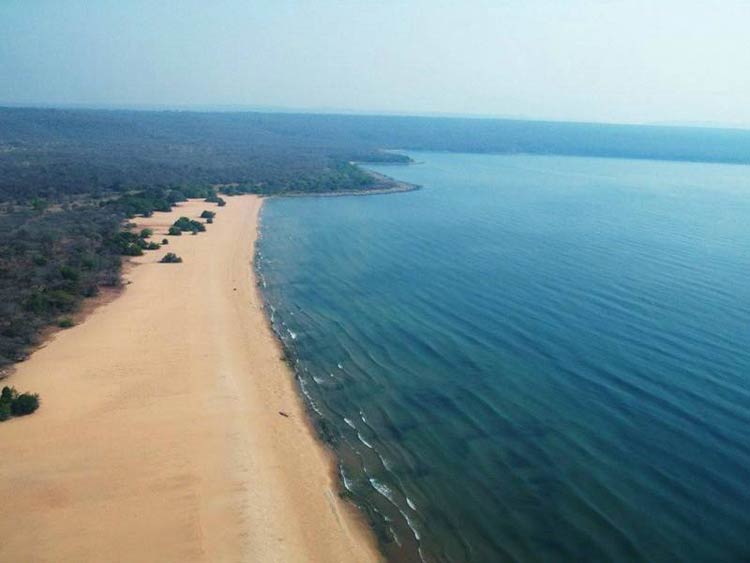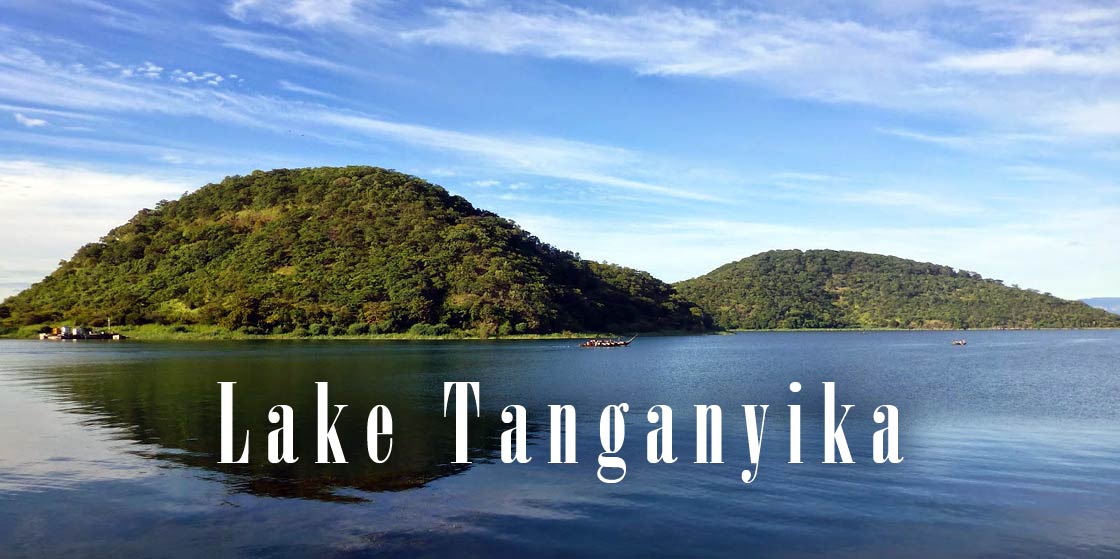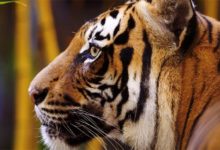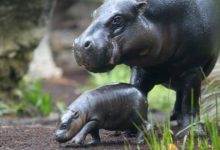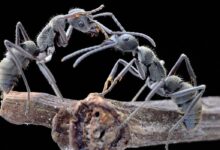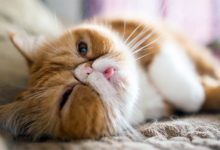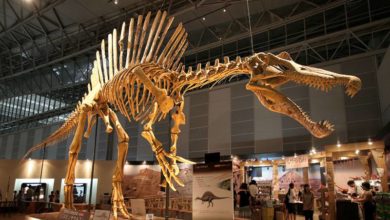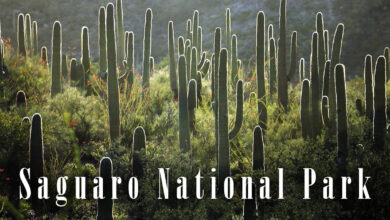A Jewel of Africa: the Unique Beauty and Biodiversity of Lake Tanganyika
The sun beats down relentlessly on the shimmering waters of Lake Tanganyika, the ancient jewel of the African continent. Its deep blue depths hide secrets and mysteries that have fascinated adventurers and explorers for centuries. From the soaring peaks of the Mahale Mountains to the bustling markets of the lake’s shore, there is no shortage of wonders to behold. But danger lurks in the shadows of this vast expanse of water, where crocodiles, hippos, and other beasts rule the waves. Join us on a journey of discovery, where the thrill of adventure meets the majesty of nature, and the legends of the past come to life on the shores of Lake Tanganyika.
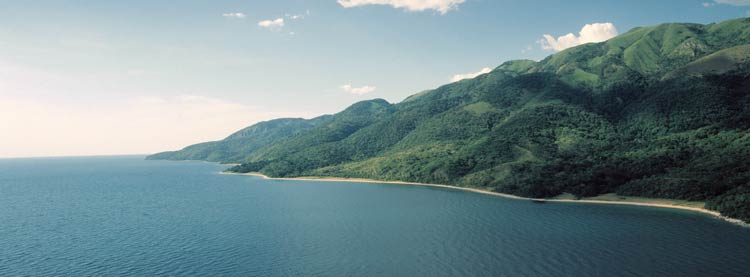
Lake Tanganyika: the Ancient Lake that Time Forgot
Lake Tanganyika is a large and deep lake located in East Africa.
- Lake Tanganyika is the second deepest lake in the world
- Lake Tanganyika is the longest freshwater lake in the world, stretching over 400 miles
The lake is known for its unique biodiversity, including many endemic species of fish and other aquatic life. The lake is bordered by four countries: Democratic Republic of the Congo, Burundi, Tanzania, and Zambia.
Lake Tanganyika is a remarkable body of water located in East Africa, known for its stunning natural beauty and exceptional biodiversity. It is one of the largest and deepest lakes in the world, measuring approximately 673 km (418 miles) in length, 50 km (31 miles) in width, and up to 1,470 m (4,823 feet) in depth.
The lake is estimated to be over 12 million years old, making it one of the oldest lakes in the world. It is situated in the Great Rift Valley, a vast geological fault system that stretches for thousands of kilometers across East Africa. This unique location has helped to shape the lake’s ecosystem, making it a haven for a wide variety of plant and animal life.
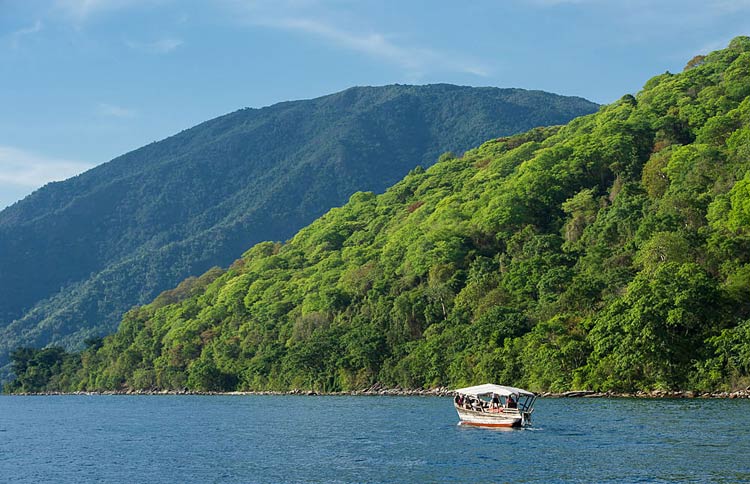
Lake Tanganyika is home to over 350 species of fish, many of which are found nowhere else in the world. The lake’s waters are clear and pristine, providing the perfect habitat for these unique and colorful creatures. The diversity of fish species found in the lake is the result of a complex series of evolutionary processes that have taken place over millions of years.
The lake’s shoreline is equally diverse, with dense forests, grasslands, and rugged mountains providing a home for a range of mammals, birds, and other wildlife. This rich natural environment has made Lake Tanganyika a popular destination for scientists and nature enthusiasts alike, who come to study its unique ecology and marvel at its stunning beauty.
Despite its remote location and challenging terrain, Lake Tanganyika remains an important hub for trade and commerce in the region, providing a vital link between local communities and the wider world. Its waters are also a source of hydroelectric power, helping to meet the energy needs of the surrounding area.
Overall, Lake Tanganyika is a remarkable and awe-inspiring natural wonder, a place where the forces of geology, ecology, and human society come together to create a truly unique and unforgettable experience.

Location
Lake Tanganyika is located in East Africa, between the Democratic Republic of Congo, Burundi, Tanzania, and Zambia.
Basic Facts About Lake Tanganyika
- Location
East Africa, bordered by Tanzania, the Democratic Republic of the Congo, Burundi, and Zambia - Size
Approximately 32,900 square kilometers (12,700 square miles) - Depth
Maximum depth of 1,470 meters (4,823 feet) - Age
Estimated to be over 10 million years old - Length
Approximately 673 kilometers (418 miles) - Width
Approximately 50 kilometers (31 miles) - Water source
Mainly from the Ruzizi River and other smaller rivers, as well as from rainfall and groundwater - Water temperature
Generally between 23-28 degrees Celsius (73-82 degrees Fahrenheit) - Salinity
Low, with an average of 0.9-1.8 grams of salt per liter of water - Fish species
Over 350 species, many of which are endemic to the lake - Human population
Estimated to be over 10 million people living in the surrounding region - Importance
Provides a vital source of food, water, and hydroelectric power for the local communities, as well as being an important hub for trade and commerce in the region.

History and name of the Lake
Lake Tanganyika is an ancient lake, estimated to be over 400,000 years old, and is considered one of the world’s oldest lakes. The name “Tanganyika” is derived from the Swahili words “tanganika” and “tanganikwa,” meaning “sail in the wilderness” or “long lake.” The lake was known by Arab and Indian traders as early as the 9th century, but it was not well explored by Europeans until the late 19th century.
Geography
Lake Tanganyika is a long, narrow lake, stretching about 400 miles from north to south and averaging about 50 miles in width. The lake is over 4,000 feet deep in some places, making it the second deepest lake in the world after Lake Baikal in Russia. The lake is surrounded by mountainous terrain, with several active and inactive volcanoes in the region. The lake has several large inlets and outlets, including the Lukuga River, which drains the lake. The lake is also fed by numerous smaller rivers and streams.
Geology
Lake Tanganyika is a Rift Valley lake, formed as a result of tectonic activity that caused the Earth’s crust to pull apart and form a depression. The lake is fed by underground springs and rivers, and its water is known for its high clarity and low mineral content. The lake’s bottom is composed of sedimentary rock and is rich in fossil deposits, including the remains of ancient mollusks, crustaceans, and other organisms. The lake is surrounded by young volcanic mountains and there are several active and inactive volcanoes in the region, which have played a role in shaping the lake’s geography and ecology over time.

Features of Lake Tanganyika
- Size and Depth
It is one of the largest and deepest lakes in the world, with a maximum depth of 1,470 meters (4,823 feet) and an estimated volume of over 18,000 cubic kilometers (4,300 cubic miles). - Age
Lake Tanganyika is estimated to be over 10 million years old, making it one of the oldest freshwater lakes in the world. - Biodiversity
The lake is home to over 350 species of fish, including many that are endemic to the lake and found nowhere else in the world. It is also home to a variety of other wildlife, including birds, mammals, and reptiles. - Clarity
The waters of Lake Tanganyika are known for their clarity, with visibility often exceeding 20 meters (65 feet). - Geography
The lake is situated in the Great Rift Valley, a vast geological fault system that stretches for thousands of kilometers across East Africa. It is also surrounded by mountains, including the Mahale Mountains and the Mitumba Mountains. - Hydrology
The lake is fed by several rivers, including the Ruzizi River and smaller streams, and its waters flow into the Congo River system. - Human Habitation
The shores of Lake Tanganyika are home to over 10 million people, including several ethnic groups such as the Bemba, the Bantu, and the Tutsi. Fishing and subsistence agriculture are the main sources of livelihood for many of these communities. - Economic Importance
The lake is an important source of fish, which is a vital source of protein for local communities and a major export product. It is also an important source of hydroelectric power and a hub for trade and commerce in the region.
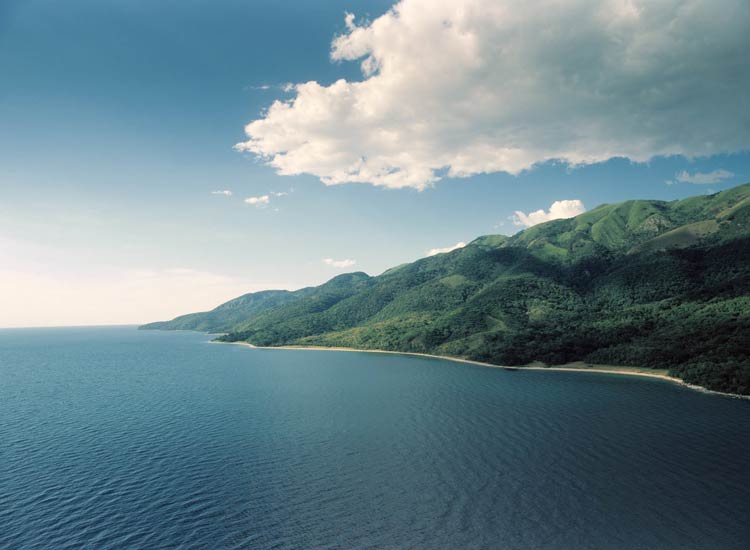
Tanganyika – one of the oldest lakes in the world
Lake Tanganyika is considered one of the oldest lakes in the world, estimated to be over 400,000 years old. Its three basins, which were separate lakes during periods of much lower water levels, are of different ages.
- The central basin began to form 9-12 million years ago (Mya)
- the northern basin 7-8 Mya
- the southern basin 2-4 Mya
This age, combined with its isolation from other major water bodies, has resulted in the development of a unique and diverse ecosystem, with many endemic species of fish and other aquatic life. The lake’s clear waters, deep depths, and stable water levels have also allowed for the preservation of a rich fossil record, providing important insights into the region’s geological and climatic history.

Islands in Lake Tanganyika
Lake Tanganyika has several islands within its waters, some of which are inhabited and some that are protected as wildlife reserves. Some of the notable islands in Lake Tanganyika include:
- Kalimba Island
located near the southern end of the lake, and home to a wildlife reserve - Lukuga Island
located near the central part of the lake, and part of the Democratic Republic of Congo - Ssese Islands
a group of 84 islands located in the northwest part of the lake, near the Ugandan shore - Mahale Mountains National Park
located on the western shore of the lake, and home to a large population of wild chimpanzees.
These islands are known for their unique ecosystems and diverse wildlife, including many endemic species of fish, birds, and primates.
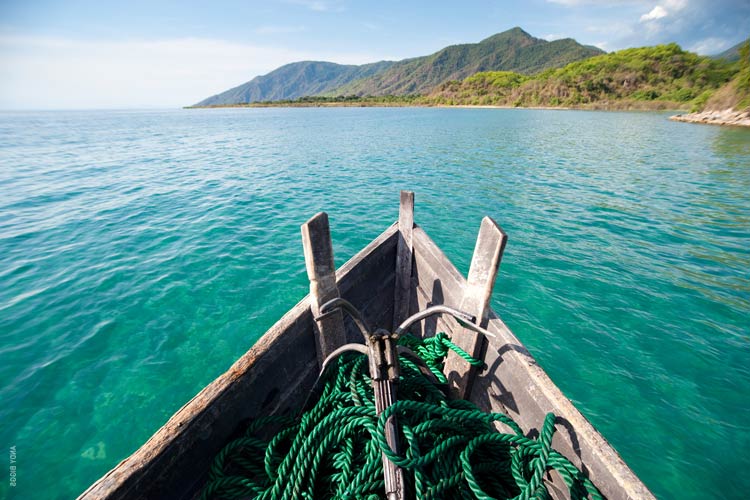
Mahale Mountains National Park
Mahale Mountains National Park is a protected area located on the western shore of Lake Tanganyika in Tanzania. The park covers over 860 square miles of mountainous terrain, including the Mahale Mountains and the forested slopes that lead down to the lake shore.
The park is known for its rich and diverse wildlife, including chimpanzees, lions, leopards, elephants, and over 1,000 species of birds. The park is also home to several communities of traditional fisherman, who have lived along the lake’s shores for generations and rely on the lake for their livelihoods. The park is a popular destination for eco-tourism, with opportunities for trekking, wildlife viewing, and cultural encounters.
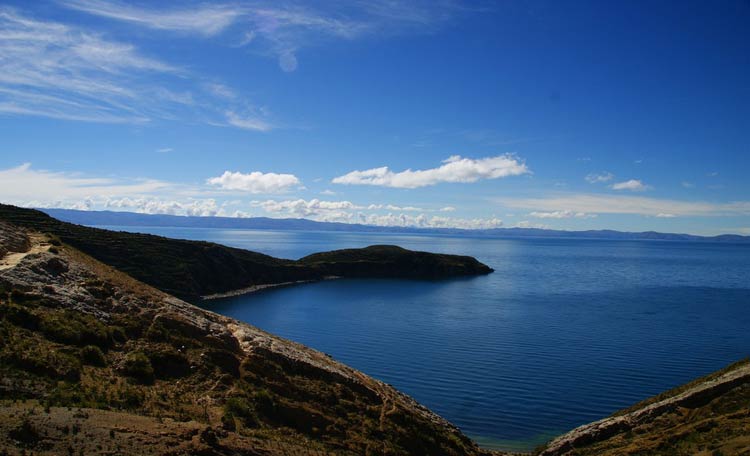
Climate
Lake Tanganyika has a tropical climate, with warm temperatures throughout the year and high levels of precipitation. The lake’s location near the equator results in consistent high temperatures and strong solar radiation, with average temperatures ranging from 21-27°C (70-80°F). The lake is surrounded by high mountains, which create a rain shadow effect, leading to lower rainfall levels along the lake’s shores compared to the surrounding highlands.
The lake’s water temperature is relatively stable throughout the year, with a range of 20-25°C (68-77°F). The lake’s climate and water conditions, along with its isolation and unique geological history, have contributed to the development of a diverse and endemic ecosystem, with many species of fish and other aquatic life found nowhere else in the world.

Flora of Lake Tanganyika
The shores of Lake Tanganyika are characterized by a mixture of tropical forests, savannas, and grasslands, with a rich diversity of vegetation and wildlife. The lake’s water is also home to a diverse array of aquatic plants, including several species of algae and water lilies. Some of the dominant vegetation types along the lake’s shores include:
- Mangroves
found in the tidal zones along the lake’s shores, these salt-tolerant trees provide important habitat for a variety of wildlife, including fish and birds. - Montane forests
found at higher elevations along the lake’s shores, these forests are dominated by large trees and are home to a rich diversity of primates, birds, and other wildlife. - Savannas
found in the lower-elevation grasslands along the lake’s shores, these areas are characterized by tall grasses and scattered trees, and are home to a variety of grazing animals, such as antelopes and zebras.
The vegetation along the lake’s shores supports a rich and diverse ecosystem, including many endemic species of fish and other aquatic life, as well as numerous bird species and primates.
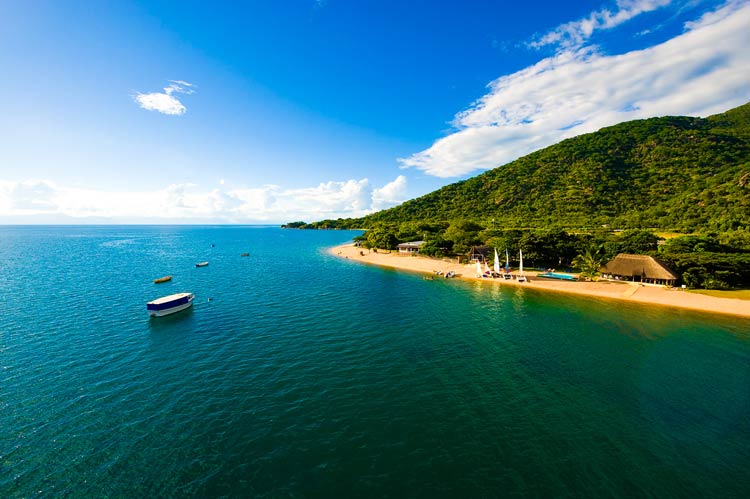
Fauna of Lake Tanganyika
Lake Tanganyika is known for its unique and diverse ecosystem, with many species of fish and other aquatic life found nowhere else in the world. The lake’s shores and surrounding areas are also home to a rich diversity of wildlife, including primates, birds, and large mammals. Some of the notable species found in the area include:
- Cichlid fish
over 250 species of cichlid fish are found in Lake Tanganyika, many of which are endemic to the lake and have evolved unique adaptations to their environment. - Chimpanzees
found in the Mahale Mountains National Park and other areas along the lake’s shores, chimpanzees are one of the area’s most famous and sought-after wildlife species. - Lions, leopards, and elephants
these large mammals are found in the forests, savannas, and grasslands along the lake’s shores, and are an important part of the area’s ecosystem. - Birds
over 1,000 species of birds have been recorded in the area, including many waterbirds, such as pelicans and cormorants, as well as forest birds and migratory species.
The unique and diverse fauna of Lake Tanganyika and its surrounding areas make it a popular destination for eco-tourism, with opportunities for wildlife viewing, trekking, and cultural encounters.
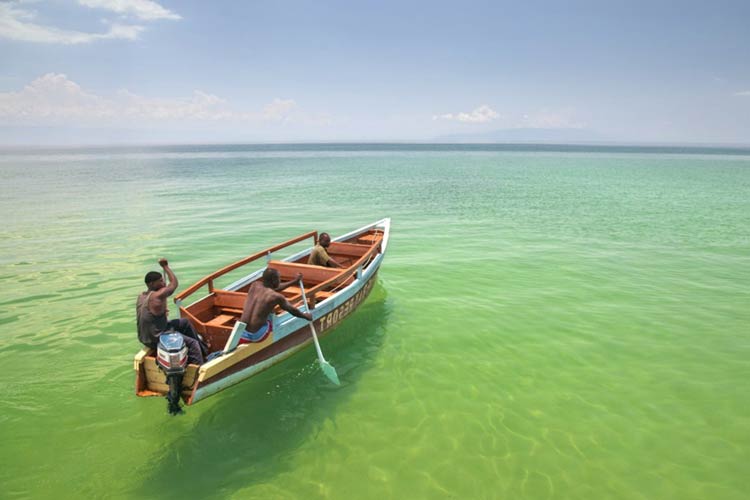
Tourism and tourist main attractions
Lake Tanganyika is a popular destination for eco-tourism and adventure travel, offering a range of attractions for visitors. Some of the main tourist attractions in the area include:
- Wildlife viewing
the lake’s shores and surrounding areas are home to a rich diversity of wildlife, including primates, birds, and large mammals, making it a popular destination for wildlife viewing and trekking. - Scuba diving and snorkelling
the lake’s clear waters and unique ecosystem make it a popular destination for scuba diving and snorkelling, with opportunities to see a variety of fish, cichlids, and other aquatic life. - Cultural encounters
several communities of traditional fisherman still live along the lake’s shores, offering visitors a chance to experience local culture and traditions, and learn about the importance of the lake to local communities. - Beaches and water activities
the lake’s shores are dotted with sandy beaches and clear waters, making it a popular destination for water activities such as swimming, fishing, and boating. - Trekking and hiking
the surrounding mountains and forests offer a range of trekking and hiking opportunities, with opportunities for wildlife viewing, scenic views, and cultural encounters.
The combination of natural beauty, unique ecosystem, and cultural diversity make Lake Tanganyika a popular destination for eco-tourism and adventure travel, attracting visitors from around the world.
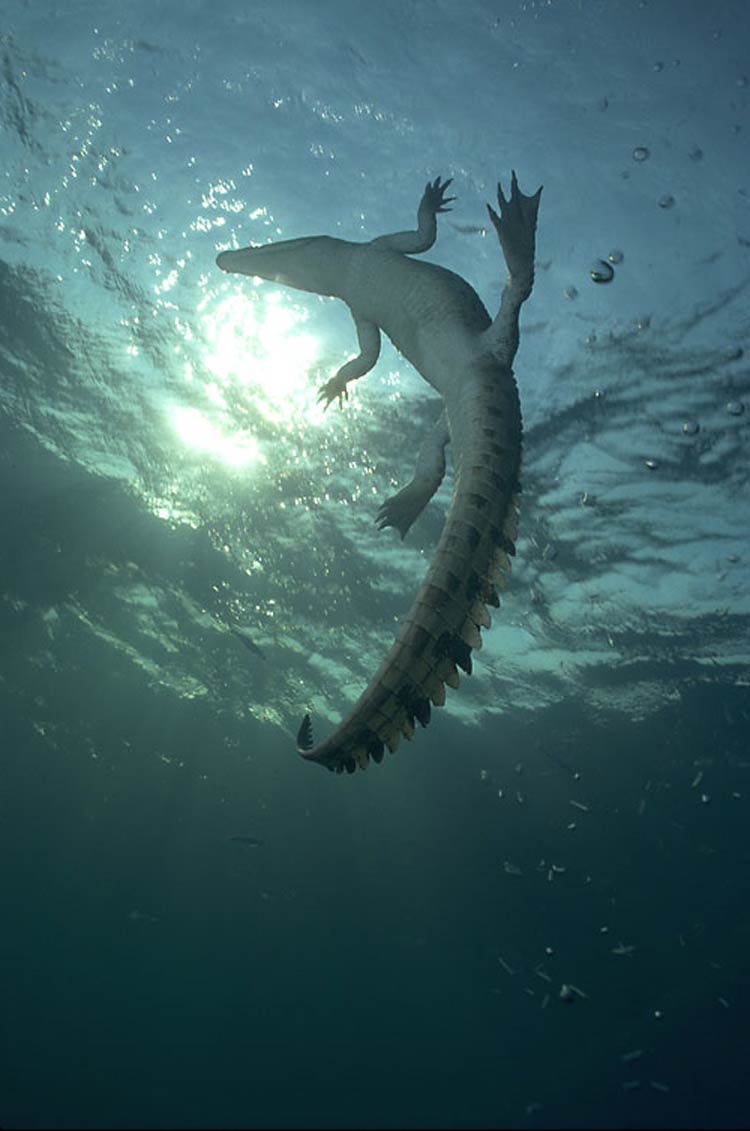
How To Reach To Lake Tanganyika?
There are several ways to reach Lake Tanganyika depending on your location and preferences. Here are some common options:
- By air
You can fly into the major cities near Lake Tanganyika, such as Bujumbura in Burundi, Kigoma in Tanzania, or Ndola in Zambia, and then travel to the lake by car or boat. - By road
If you are traveling from nearby cities or countries, you can reach Lake Tanganyika by road. Major highways connect the lake to nearby cities such as Dar es Salaam in Tanzania, Kigali in Rwanda, and Kampala in Uganda. - By boat
You can take a ferry or private boat to travel across the lake to different destinations. Ferries operate between major ports such as Kigoma, Mpulungu, and Bujumbura. - By train
The TAZARA (Tanzania Zambia Railway Authority) train runs from Dar es Salaam to Kapiri Mposhi in Zambia, with stops in towns near Lake Tanganyika, such as Mpulungu in Zambia and Kigoma in Tanzania.
It is recommended to check the latest travel information and obtain the necessary visas and permits before traveling to Lake Tanganyika.
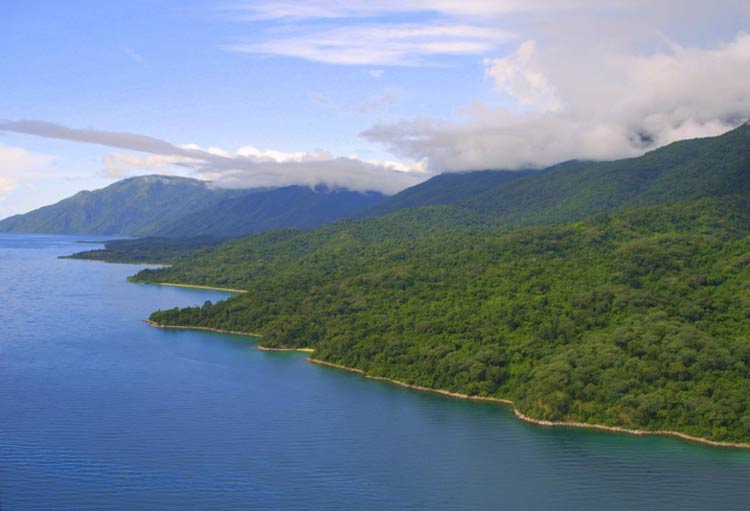
Best Time To Visit Lake Tanganyika
The best time to visit Lake Tanganyika depends on your interests and travel plans. Generally, the dry season from June to October is considered the best time to visit, as the weather is cooler and drier, making it more comfortable for outdoor activities such as hiking, fishing, and wildlife viewing.
The wet season from November to May is characterized by high humidity and frequent rainfall, which can make some areas difficult to access. However, the wet season also brings lush greenery and blooming flowers, which can make for stunning scenery.
It’s important to note that Lake Tanganyika is a year-round destination, and each season has its own unique advantages and disadvantages. You should consider your personal preferences and interests when planning your trip to Lake Tanganyika.
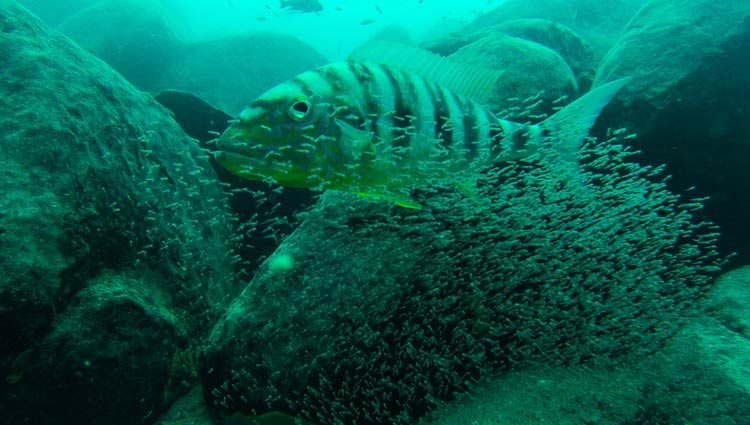
Fishing in Lake Tanganyika
Fishing is an important activity in and around Lake Tanganyika, providing livelihoods for local communities and serving as a source of food and income. The lake is known for its abundant and diverse fishery, including over 200 species of cichlid fish, many of which are endemic to the lake.
Commercial fishing for tilapia, sardine, and other species is an important economic activity, with fish being caught using nets, hooks, and other gear. In recent years, the fishing industry has faced challenges from overfishing and declining fish stocks, leading to concerns about the long-term sustainability of the fishery.
In addition to commercial fishing, Lake Tanganyika also supports a thriving sport fishing industry, with many anglers visiting the lake to fish for large, predatory fish species such as the Nile perch and catfish.
Overall, fishing in Lake Tanganyika plays a significant role in the local economy and culture, and efforts are underway to ensure that this valuable resource is managed and protected in a sustainable manner.

Water characteristics
Lake Tanganyika is known for its high water quality, with clear and transparent waters and low levels of pollutants and suspended solids. Some of the key water characteristics of Lake Tanganyika include:
- Salinity
Lake Tanganyika has low salinity levels compared to other lakes, with an average salinity of around 300 milligrams per liter (mg/L). - Temperature
The temperature of the lake varies depending on location and depth, with surface temperatures ranging from around 20 to 27 degrees Celsius (68 to 81 degrees Fahrenheit). - Oxygen levels
Lake Tanganyika has high oxygen levels, with over 90% of the lake’s water volume containing dissolved oxygen. - pH
The pH of Lake Tanganyika ranges from 7.7 to 8.3, which is considered neutral to slightly alkaline. - Transparency
Lake Tanganyika has exceptional transparency, with deep waters often appearing to be almost black due to the high transparency of the water.
These water characteristics play a critical role in supporting the lake’s diverse and abundant ecosystem, including its endemic species of fish and other wildlife. The high quality and transparency of the water also contribute to the lake’s scenic beauty and make it a popular destination for tourism and recreational activities.
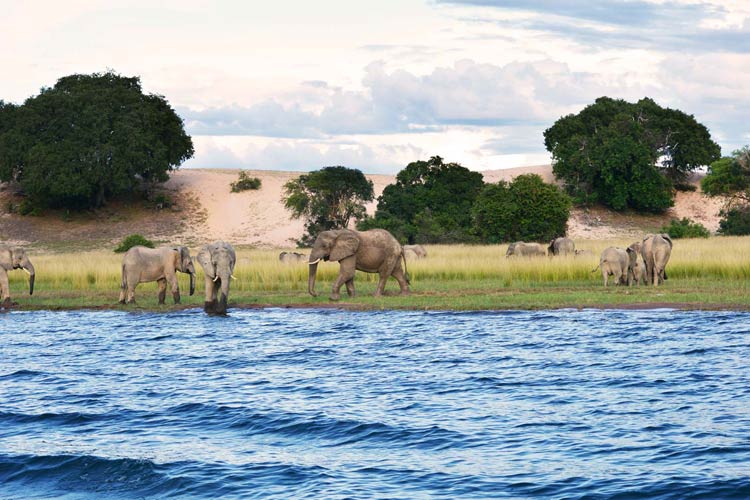
Transport on Lake Tanganyika
Transport on Lake Tanganyika is primarily provided by boats and ferries, with limited road and air connectivity along the lake’s shoreline. The lake’s size and the limited road infrastructure in the surrounding area make water transport an important means of accessing local communities and transporting goods and people.
Ferries are the main mode of transport for people and goods, connecting the lake’s shoreline communities and providing a vital link for trade and commerce. These ferries can range from small, traditional boats to larger vessels equipped with sleeping quarters and cargo holds.
In addition to ferries, Lake Tanganyika is also home to several ports and harbors, including the major port of Kalemie in the Democratic Republic of the Congo, which serves as a hub for transport and trade in the region.
While transport on Lake Tanganyika can be slow and unreliable at times, it remains a critical lifeline for the lake’s shoreline communities, connecting them with essential services and markets. Efforts are underway to improve transport infrastructure and services on the lake, including the development of new ports and the upgrading of existing vessels, to support the growth of the local economy and improve connectivity in the region.
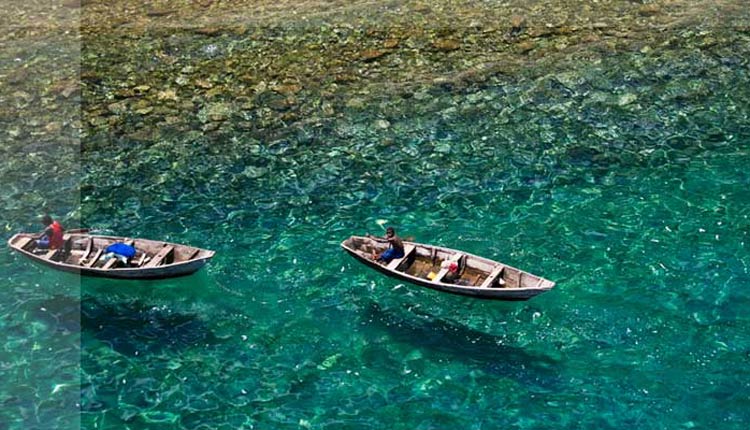
2005 Lake Tanganyika earthquake
The 2005 Lake Tanganyika earthquake was a significant seismic event that occurred on December 5th, 2005. The earthquake had a magnitude of 6.8 and was centered in the lake’s northern basin, near the border between the Democratic Republic of the Congo and Tanzania.
The earthquake caused significant damage in the surrounding area, with buildings collapsing and widespread power outages reported. There were also several casualties, although the exact number is not known.
The earthquake was significant because it was the first known seismic event in the region with a magnitude greater than 6.0, and it raised concerns about the potential for future earthquakes and the impact they could have on the lake’s ecosystem and the local communities along its shores.
In the aftermath of the earthquake, there was an increased focus on earthquake preparedness and disaster response in the region, with efforts to improve infrastructure and build community resilience. The 2005 earthquake also prompted new studies of the geology and seismology of the region, helping to build a better understanding of the area’s tectonic and seismic activity.

Conservation
Conservation is a critical issue for Lake Tanganyika due to its unique biodiversity and ecological importance. There are several conservation efforts underway to protect the lake and its surrounding ecosystems.
One of the key organizations involved in conservation efforts is the Lake Tanganyika Authority, which is responsible for promoting sustainable development and management of the lake and its resources. The authority works closely with national governments, local communities, and other stakeholders to implement conservation programs and policies.
Other organizations, such as the Wildlife Conservation Society, also work to protect the lake’s biodiversity and endangered species, such as the Tanganyika sardine and the Tanganyika killifish.
Efforts are also underway to address environmental threats to the lake, such as overfishing, pollution, and habitat destruction. Sustainable fishing practices and regulations have been put in place to manage fish stocks and protect the lake’s ecosystem. Education and awareness programs are also being implemented to promote responsible tourism and reduce pollution.
Overall, conservation efforts are crucial to ensuring the long-term health and sustainability of Lake Tanganyika and its unique ecosystem.
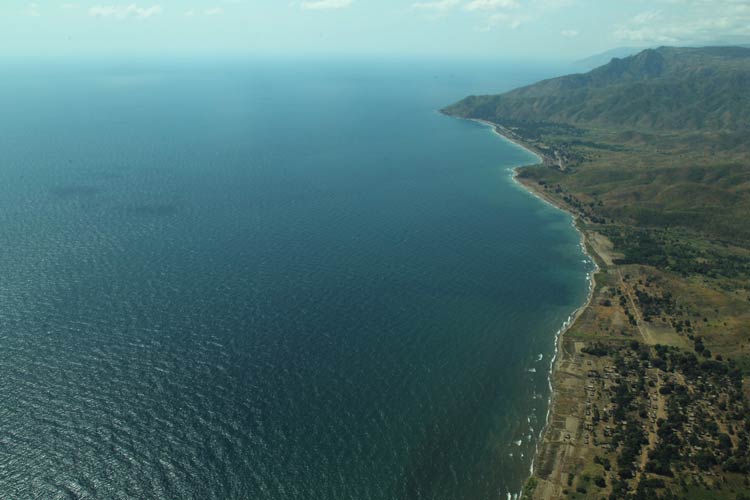
Lake Tanganyika in numbers
- Age: estimated to be 9-12 million years old
- Area: 32,900 square kilometers (12,700 square miles)
- Length: 673 kilometers (418 miles)
- Maximum width: 72 kilometers (45 miles)
- Maximum depth: 1,470 meters (4,823 feet)
- Volume: 18,880 cubic kilometers (4,529 cubic miles)
- Shoreline length: 1,828 kilometers (1,136 miles)
- Number of fish species: over 350, including more than 200 endemic species
- Number of islands: approximately 50, including Kavala Island, Mamba Island, and Mwila Island
- Countries sharing the lake: Tanzania, the Democratic Republic of Congo, Burundi, and Zambia.
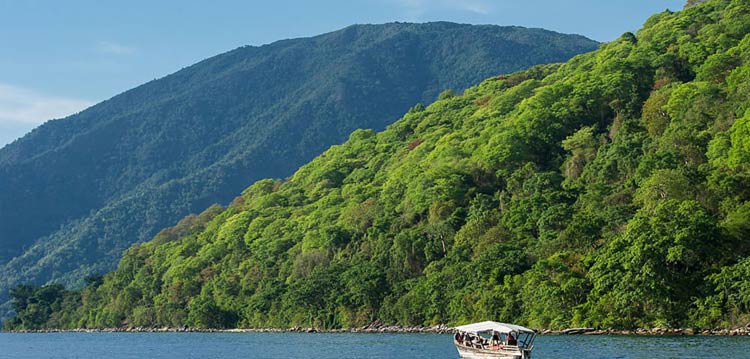
Interesting facts about Lake Tanganyika
Lake Tanganyika is a fascinating and unique body of water, with many interesting and noteworthy features. Some of the most interesting facts about Lake Tanganyika include:
- Endemic species
the lake is known for its unique and diverse ecosystem, with over 250 species of endemic cichlid fish, many of which have evolved unique adaptations to their environment. - Water quality
Lake Tanganyika is one of the few lakes in the world with high water quality, with clear and transparent waters that support a diverse and abundant ecosystem. - Limnology
Lake Tanganyika is a important site for the study of limnology, or the study of freshwater ecosystems, and has provided valuable insights into the evolution and ecology of freshwater ecosystems.
These and other interesting facts about Lake Tanganyika demonstrate the lake’s unique and fascinating characteristics, and make it an important and valuable resource for the people and wildlife that depend on it.
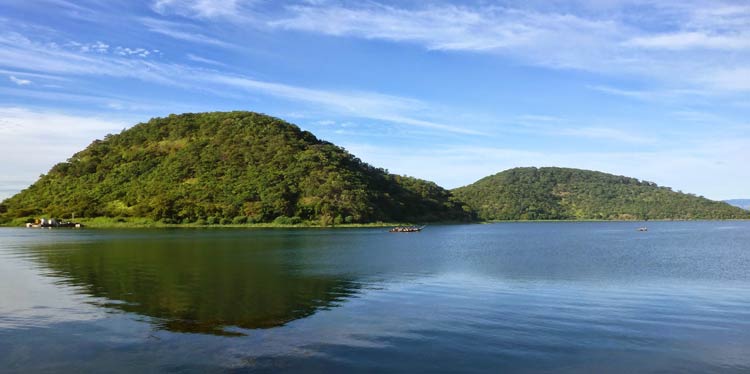
Q&A (questions and answers) about Lake Tanganyika
Q: Where is Lake Tanganyika located?
A: Lake Tanganyika is located in East Africa, bordered by the countries of Tanzania, the Democratic Republic of the Congo, Burundi, and Zambia.
Q: How old is Lake Tanganyika?
A: Lake Tanganyika is estimated to be between 9 and 12 million years old, making it one of the world’s oldest lakes.
Q: What is the maximum depth of Lake Tanganyika?
A: Lake Tanganyika has a maximum depth of 1,470 meters (4,820 feet), making it the second deepest lake in the world.
Q: What makes Lake Tanganyika unique?
A: Lake Tanganyika is unique for its diverse and endemic ecosystem, including over 250 species of cichlid fish found nowhere else in the world, and its high water quality, with clear and transparent waters.
Q: What is the length of Lake Tanganyika?
A: Lake Tanganyika is the longest freshwater lake in the world, stretching 673 kilometers (418 miles) from north to south.
Q: What is the climate like around Lake Tanganyika?
A: The climate around Lake Tanganyika is tropical, with high temperatures and high humidity, and seasonal rainfall patterns.
Q: What is the ecosystem like in Lake Tanganyika?
A: Lake Tanganyika is known for its diverse and abundant ecosystem, including over 250 species of endemic cichlid fish, and a variety of waterbirds, primates, and other wildlife.
Q: What is the importance of Lake Tanganyika to local communities?
A: Lake Tanganyika is an important resource for local communities, providing livelihoods through fishing and other activities, and serving as a source of water and other resources.
